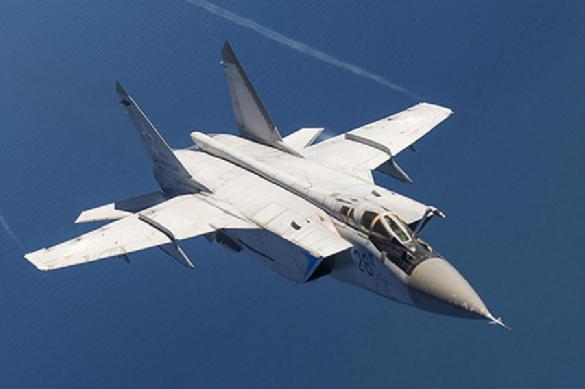Russia's new Kh-95 hypersonic missile ends the arms race with the United States
Colonel-General Vladimir Zarudnitsky, the head of the Military Academy of the General Staff of the Armed Forces of the Russian Federation, published an article in August of this year, in which he casually referred to Russia's state-of-the-art development in the field of hypersonic weapons — the X-95 aircraft missile (also can be spelled as Kh-95). Why would Russia need yet another hypersonic missile given that the country already has Zircon and Kinzhal missiles?

According to Vladimir Zarudnitsky, Russia needs to strive to achieve the dominant role of the Russian aviation in the field of aerospace, and it would be impossible to achieve the goal without the effective use of fighter and strike aircraft. Needless to say that the successful destruction of anti-aircraft, aviation and nuclear missile groups of a potential enemy is crucial for victory in any military operation.
To achieve military superiority, it is vital for Russia to always be prepared to:
- destroy enemy aircraft on the ground and in the air;
- destroy airfield infrastructure (runways, taxiways, centralized refueling, etc.);
- destroy air and anti-missile defense systems;
- eliminate strategic nuclear missile forces positioned as the main weapons of Russia's enemies;
- destroy warehouses (storage facilities) of material resources.
What is the difference between the new Kh-95, Zircon and Kinzhal missiles?
According to military expert Viktor Baranets, even though there is no information about the performance of the new Kh-95 missile, it is possible to refer to the Kh-101 ultra-long-range aviation cruise missile for comparison. Speaking about the guaranteed range of this missile, Russian Defence Minister Sergei Shoygu said that it goes about 4,500 kilometers. One shall assume that the Kh-95 will fly farther. If this is the case, Russia's strategic aviation will obtain a formidable weapon with an increased leverage. Russia will thus be able to attack the enemy without entering the zone of action of its air and missile defense, which automatically serves as a guarantee of a high level of security for a strategic carrier bomber.
It transpired that Zircon and Kinzhal hypersonic cruise missiles will have their effective range at a level of 400-1000 and 2000 kilometers, respectively (depending on the source). However, the range of the combat use of modern air defense systems grows constantly. This applies to interceptor fighter aircraft in the first place, because this indicator already makes up 2,000
kilometers for them (can be even more taking into account the possibility of air refuelling).
Therefore, the use of the rockets below the range of 2,000 kilometres on board long-range strategic bomber aircraft is not enough to succeed. Modern-day requirements for combat capabilities of air-launched cruise missiles envisage an effective engagement range of about 5,500 kilometers. This is performance characteristic of Kh-101 strategic air-to-surface cruise missile and its thermonuclear version, the Kh-102, which is currently in service with the Russian Air Force.
The Kh-95 rocket is needed to minimize the risk of failure of a combat mission performed by strategic bombers of the Russian Aerospace Forces. The ultra-long-range hypersonic aircraft missile will nullify the potential capabilities of even most advanced air defense systems that involve the use of powerful anti-aircraft missile and air cover.
Russia currently has 16 Tupolev Tu-160 long-range strategic bomber aircraft. They are considered as a carrier aircraft for the Kh-95 rocket. The Russian Defense Ministry signed contracts for the construction of 50 Tupolev Tu-160M aircraft. The serial production of the prospective aircraft complex known as PAK DA Poslannik (Messenger) is to start as early as in 2028.
The minimum quantitative level of Kh-95 carrier aircraft should be at least three heavy bomber aviation divisions with a total fleet of 120 aircraft: 40 Tu-160M, Tu-22M3M and PAK DA units each. It goes without saying that the implementation of such a project will require colossal financial resources, production resources, let alone time.
In conclusion, we would like to note that Russia's "partner" overseas, the United States, is unable to achieve parity with the Russian Federation in the field of hypersonic weapons. Not that long ago, the US has failed yet another trial of the AGM-183A Air-Launched Rapid Response Weapon, a prototype of the US hypersonic missile.
Subscribe to Pravda.Ru Telegram channel, Facebook, RSS!


